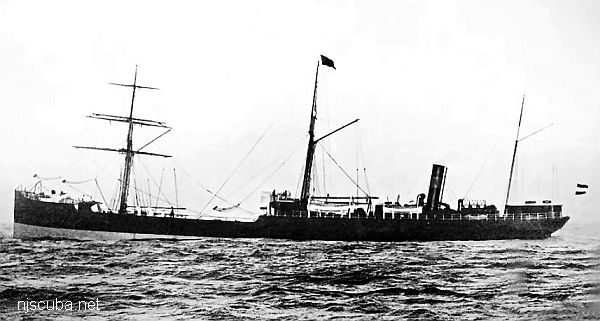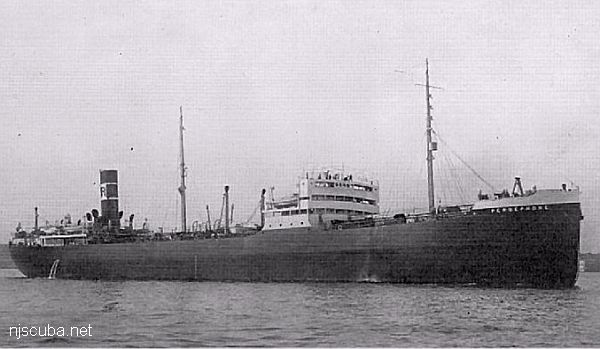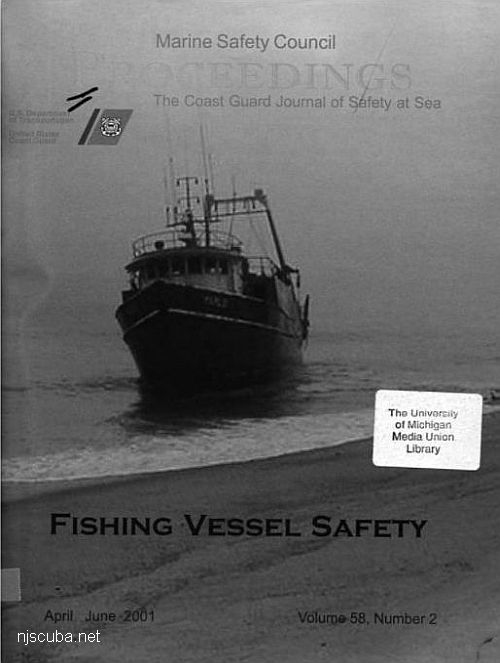Tanker

A tanker is a cargo ship designed to carry liquid cargoes, usually but not always fuel oils.
The tanker fleet includes some of the world's biggest mechanically-propelled moving objects, but the term "tanker" covers a wide variety of different types and sizes of ships designed to carry liquids or gases in bulk. Biggest of all are the Ultra Large Crude Carriers, a handful of which are able to carry half a million tons of crude oil, although a more normal size range is the Very Large Crude Carrier of between 250,000 and 300,000-ton capacity. There is also a sizable fleet of around 140,000 tons, a class of ship which is able to pass laden through the Suez Canal, and serve a range of ports which the bigger ships could not enter. Crude carriers typically carry large cargoes of crude oil from the oil-producing countries to the refineries. Arabian Gulf to Singapore or Japan, or North Europe are typical trade routes.
Product tankers are smaller vessels, of up to around 80,000 tons, which carry the many petroleum products of the refineries, clean white oil cargoes like gasoline or black oils like heavy fuel oil or diesel. These vessels begin the distributive process, moving from the refineries to the tank farms in the consuming countries, from where the oil cargoes are fed by road, rail, pipeline, and coastal tankers and inland tank barges to power stations, and depots close to where the products are used.
The tanker fleet is a highly adaptable, responsive floating pipeline which is capable of adjusting to considerable fluctuations in demand, as cold weather bites or industrial capacity increases. Ships can be switched to add or reduce capacity or take advantage of price fluctuations, almost at a moment's notice. Oil being a traded commodity, the adaptability of tankers is highly important in this respect.
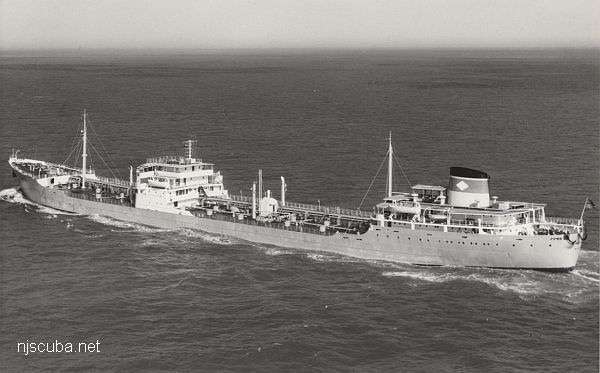
Medium-sized in her day, but small by today's standards
Tankers are enormously strong vessels, built with a honeycomb construction, a modern crude carrier typically having fifteen cargo tanks protected by a double hull structure around the sides and bottom, in which seawater ballast can be carried for the empty voyage after the oil cargo has been delivered. On such modern double-hulled tankers, the oil and ballast remain separate, which greatly reduces the risk of pollution.
A tanker will normally be loaded by shore equipment but will use her own powerful pumps to empty herself at the discharge ports. Crude oil comes in many forms, ranging from those that are light and free running, to heavy and waxy crude which require heating so they can be pumped freely. Most hydrocarbons are toxic and flammable and it is modern safety practice to keep the tanks filled with a blanket of inert gas.
Specialist tankers include vessels that are configured to carry as many as fifty different grades of chemicals and oils, each with their own separate pumping systems and capable of coping with cargoes that need to be shipped hot, cold, or under a blanket of nitrogen. There are ships built of stainless steel for the carriage of acids, others with sophisticated coatings for the carriage of edible oils and wine. Gas tankers carry LPG and Methane.
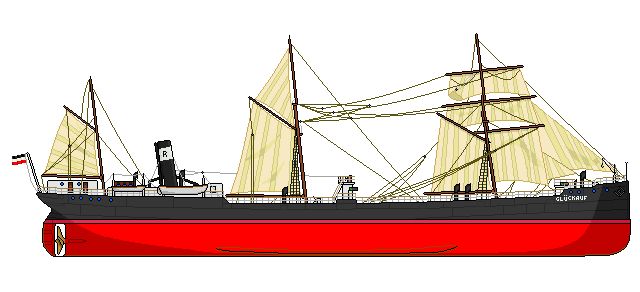
The Gluckauf was the first modern tanker, designed with tankage for the liquid cargo integral with the hull of the vessel. Prior to that, oil was carried in drums in the cargo holds, where it was loaded and unloaded by hand. Without adequate ventilation, leakage from the drums could form an explosive cloud of vapor, and many ships were lost this way.
The first tankers of modern design were single-hulled, and leakage from around the rivets in the hull meant that the ship left a thin oil slick behind it as it went. In those days, environmental concerns were much less than today, but on a typical voyage, a small percentage of the ship's cargo would simply leak overboard. Still, this was much safer than the prior method, and the losses were made up for by the much greater efficiency in loading and unloading the ships, so much so that the longshoremen felt threatened by the new development and boycotted the vessels for a time. Later welded construction solved most of the leakage problems.
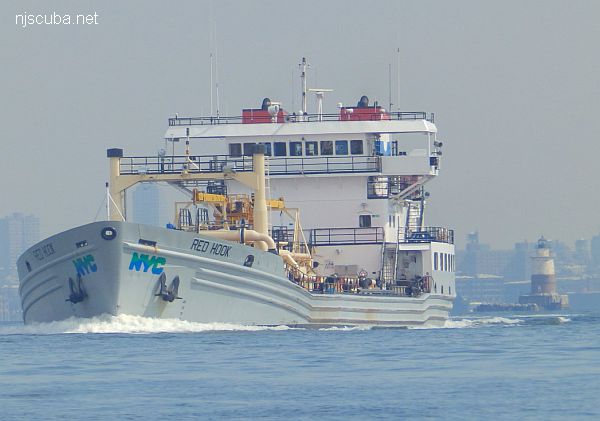
To maximize cargo capacity in modern tankers, all machinery, crew quarters, etc. are usually located in the stern of the vessel. The bridge is sometimes located further forward to afford a better view. Many tankers also have a dry hold for any bulk cargo that might be profitably carried. My own observation, without any scientific backing, is that oil tankers seem to be rather more fragile than other vessels, judging by the number of catastrophic hull failures that occur.
During World War II, three standardized classes of tanker were developed. Not surprisingly, these were known as T1, T2, and T3. Each class contained several different models, all grouped together by size and speed.
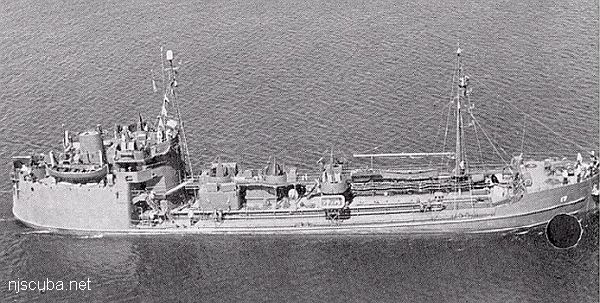
T1's were small but ocean-going ships of 200-250 feet, capable of a sustained speed of 12 knots. The classification is still used today.
The "handy size" tanker ( 6,000 to 35,000 cargo DWT, or approximately 48,000 to 280,000 BBLs ) is the most militarily useful. These generally carry clean or refined products, although some may carry black oil, chemicals, and, occasionally, bulk grain. The advantages of handy size tankers include their ability to enter most of the world's tanker ports, the relatively short time required for tank cleaning when required, and their overall flexibility with regard to the number of different cargoes they can carry. Many WWII Navy T1s passed into civilian service after the war.
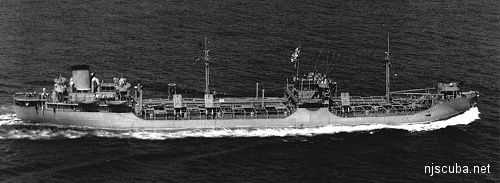
The T2 was the backbone of the wartime tanker fleet, and far more numerous than the other types. The T2 tanker design was first adapted from SS Mobilfuel and SS Mobilube, built for the Socony-Vacuum Company ( later to become Mobile Oil. ) these standard T2s were 501 feet 6 inches in total length, with a beam of 68 feet. Rated at 9,900 tons gross (GRT), with a deadweight of 15,850 tons, standard T2s displaced about 21,100 tons. Steam turbines driving a single propeller at 12,000 shaft horsepower delivered a top speed of 15 knots. The T2-A type tanker was an early design variation. Bigger but faster, they were 526 feet in total length, displaced about 22,445 tons, and were rated at 10,600 tons gross with a deadweight tonnage of 16,300 - yet they attained a top speed approaching 16 1/2 knots. Only a few of each type were built.
By far the most common variety of the T2-type tanker was the T2-SE-A1, another commercial design already being built in 1940 by the Sun Shipbuilding Company for Standard Oil Company of New Jersey. These were 523 feet long, 68 feet beam, with 10,448 GRT and DWT of 16,613. Their turbo-electric propulsion system delivered 6,000 shaft horsepower, with a maximum thrust of 7,240 horsepower, which produced a top-rated speed of about 15 knots with a cruising range of up to 12,600 miles. After Pearl Harbor, the United States Maritime Commission ordered this model built en masse, and 481 were built in extremely short production times.
The T2-SE-A1 had 9 sets of tanks. Tanks 2 through 9 had a main center tank carrying 391,500 gallons, and two side tanks ( one port, one starboard ) carrying about 165,000 gallons each. Tank number one consisted of only two side-by-side tanks, divided by a common bulkhead, as this tank set was only 13 feet 6 inches long. Tank sets 2 through 9 were 36 feet 6 inches long. Total cargo was about 5,930,000 gallons, about 141,200 barrels. There was also a small dry cargo space of about 15,200 cubic feet located forward of Tank Number 1 above the deep tank for a very small amount of dry cargo.
There were two pump rooms, one forward and one aft. The main pump room was aft and contained six pumps. There were three large-capacity pumps of 2,000 gallons per minute which were driven by electric motors located in an adjacent machinery space. There were also two 400 GPM pumps and one 700 GPM pump. In the forward pump room was one 700 GPM pump and 300 GPM pump which were reciprocating pumps used for fuel transfer and stripping.
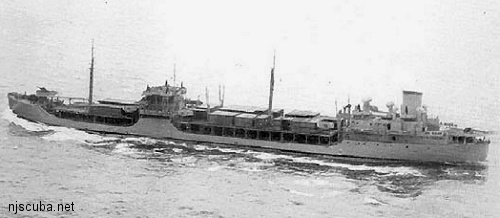
During the wartime shipping shortage, many T2s had skeleton decks installed to carry containerized bulk cargoes, aircraft, and vehicles above the tanks and piping. The first civilian container ship was a similarly modified T2 tanker.
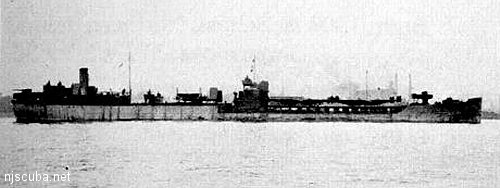
The T3 was a slightly larger and faster variant of the T2. The ships were 553 feet long overall, 75 feet wide with a gross tonnage of 11,335 tons, deadweight capacity of 18,300 tons, and a full load displacement of 24,830 tons. Propulsion was provided by two steam turbine sets (HP & LP) geared to two shafts, giving the ships an 18-knot service speed. Because of their size, speed, and range, many were converted to Escort Aircraft Carriers.
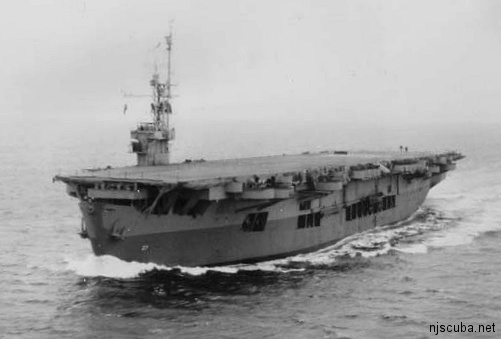
After the war, many T2s and T3s were sold to commercial operators, forming the backbone of the world's tanker fleet. Like Liberty Ships, these eventually passed on to third-world operators as they were replaced with newer and larger ships in the 1970s. Few if any still remain in service.
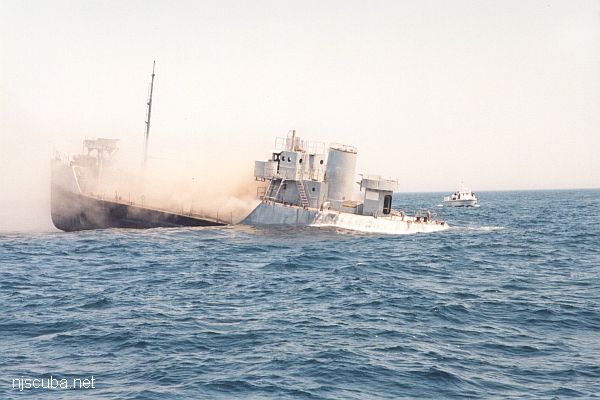
Small harbor tankers of less than 200 feet are a staple of the Artificial Reef Program. Almost all are of Navy origin, like the Captain Bart, YOG-58, shown here being sent to the bottom on the Shark River Reef.
Vessels like this were built in several different classes, varying in length from 156 to 174 feet. They had a single diesel engine of around 530 hp, giving a top speed of about 8 knots, for moving around port to refuel other ships. During the war, the Navy also took over many similar private vessels.
These ships were classified "YO" for "Yard Oiler", or rarely "YW", for a water carrier. "YW"s generally carried saltwater to inland ports, where it was used to test the desalination plants of vessels there. A "YOG" was a gasoline carrier. An "N" appended to the classification indicates that the vessel is no longer self-propelled, ie, it broke down and was never fixed.
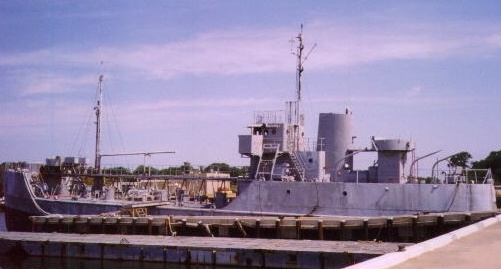
The job of these little tankers was to store and distribute fuel in port, not carry it long distances. The Navy regarded them as self-propelled barges. They could get around in protected waters without assistance, and could even deploy overseas, although slowly crossing the open ocean in one of these must have been a little scary. Fully loaded, they have practically no freeboard. They were not equipped for navigation, and crew facilities were rudimentary. See construction for more photos of this class of ship.
The "yard tanker" role has largely been taken over by tugs and barges. However, these hulls are renowned for their toughness and longevity, much like the AKL freighters. These little vessels lasted decades after their bigger brothers went to the breakers, and many of them are still in use today. One of the 156-foot YO-153 class is the star of "The Deadliest Catch:"
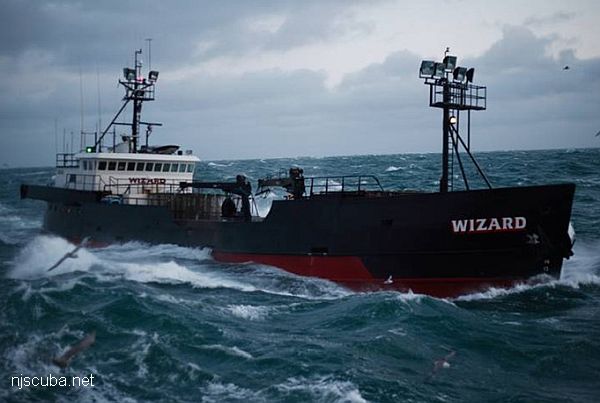
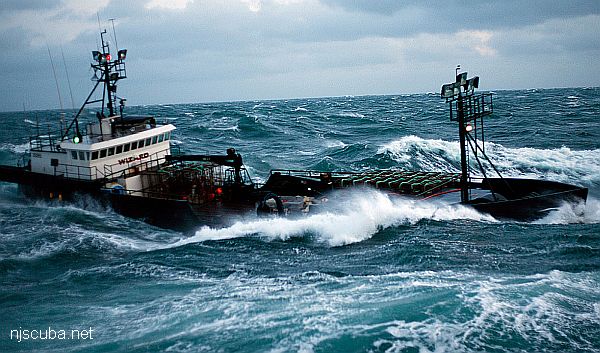
With raised sides and a completely new superstructure, she bears little resemblance to her former self. What you can't see is that she is re-engined with a much more powerful turbo-diesel, turning a more efficient modern propeller, and she also has a bow thruster installed. All this makes her much more seaworthy, able to cope even with Alaskan weather. The engine room is greatly enlarged for extra generators and hydraulics, to drive the cranes and refrigeration plant.
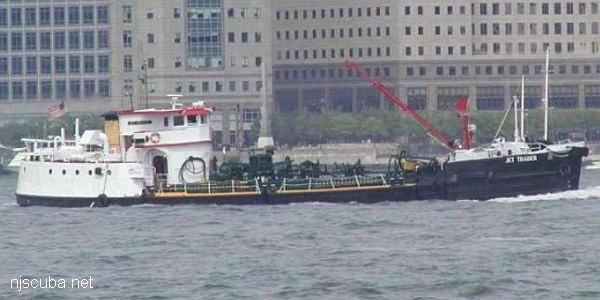
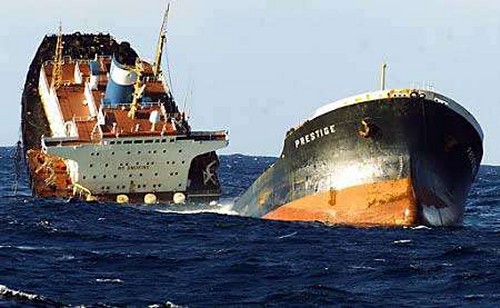
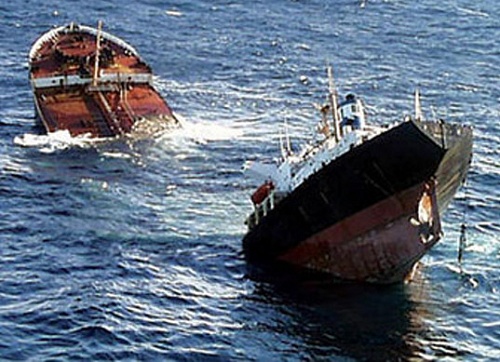
The real cause of this disaster was politics between France, Spain, and Portugal. No country would allow the ship to enter port and be emptied and repaired, so it was abandoned and drifted offshore until it eventually broke up and sank.
By modern standards, even the large T2- and T3- class tankers of World War II are small. Nowadays tankers used for liquid fuels ( and also other ships ) are classified according to their size:
| Class | Description | Size ( metric tons ) |
| ULCC | Ultra Large Crude Carrier | over 300,000 |
| VLCC | Very Large Crude Carrier | over 200,000 |
| SUEZMAX | a ship that can pass through the Suez Canal | 125,000 - 200,000 |
| AFRAMAX | formerly known as LR2( Long Range 2 ) | 80,000 - 125,000 |
| PANAMAX | a ship that can pass through the Panama Canal formerly known as LR1 ( Long Range 1 ) | 50,000 - 80,000 ( 965 x 106 x 46 |
| MR | Medium Range | 38,000 - 50,000 |
| GP | General Purpose | under 38,000 |
The following tankers are sunk in the region ( not including barges. )
| Wrecks | Built | Sunk | Cause |
| Gluckauf | 1886 | 1893 | grounded |
| Sebastian | 1914 | 1917 | fire |
| Durley Chine | 1913 | 1917 | collision |
| Lightburne | 1919 | 1939 | grounded |
| Poling Brothers #2 | 1863 | 1940 | struck ice |
| Norness | 1939 | 1942 | torpedoed |
| Coimbra | 1937 | 1942 | torpedoed |
| Varanger | 1925 | 1942 | torpedoed |
| India Arrow | 1921 | 1942 | torpedoed |
| R.P. Resor | 1936 | 1942 | torpedoed |
| Gulf Trade | 1920 | 1942 | torpedoed |
| Bidevind | 1938 | 1942 | torpedoed |
| Persephone | 1926 | 1942 | torpedoed |
| Pan Pennsylvania | 1943 | 1944 | torpedoed |
| Stolt Dagali | 1955 | 1964 | collision |
Artificial Reefs | Built | Sunk | Reef |
| Morania Abaco | 1958 | 1985 | Atlantic City |
| Francis S Bushey | 1957 | 1986 | Atlantic City |
| YO-54 A.H. Dumont | 1940 | 1986 | Gdn State N |
| YO-31 Alan Martin | 1918 | 1987 | Shark River |
| Coney Island | 1938 | 1987 | Shark River |
| Sam Berman | 1947 | 1987 | Shark River |
| V.L. Keegan | 1932 | 1989 | Sandy Hook |
| "John Dobilas" | ? | 1996 | Gdn State N |
| YW-27 "Mako Mania" | 1945 | 1998 | Shark River |
| YOG-58 "Capt Bart" | 1944 | 2000 | Shark River |
| AOG-33 Vincent Tibbetts | 1944 | 2002 | Deepwater |
| YO-153 "Helis" | 1943 | 2005 | Gdn State N |
| YO-167 Jet Trader | 1944 | 2005 | Atlantic City |
Supertankers
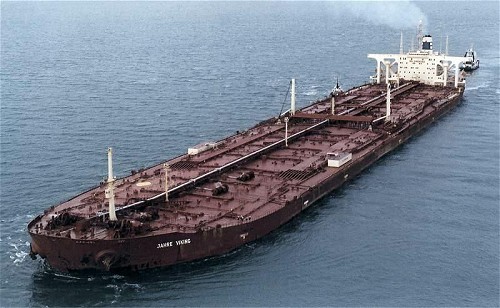
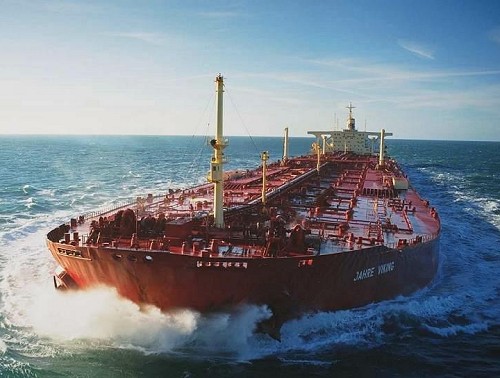
The T.T. Jahre Viking is a Norwegian-operated supertanker built in Japan 1976-79, formerly known as the Seawise Giant. Its 1504 feet in length and 226 feet in width make it the largest ship in the world. T.T. Jahre Viking has a deadweight of 564,763 metric tons and summer displacement of 647,955 metric tons when laden with nearly 4.1 million barrels of crude oil. When fully loaded, she is too big to fit through the English Channel. Sunk by Iraqi missiles in the first Gulf War, she was raised and converted to a floating storage facility.
A supertanker is a tanker ship built to transport very large quantities of liquids, especially crude oil. Ships above 250,000 metric tons are generally considered supertankers. They are the largest ships in the world, larger even than aircraft carriers. When they were first introduced their size and draught prevented them from docking at many existing docks, requiring supertankers to discharge their cargo into smaller tankers offshore. Some ports have developed special deep-water off-loading facilities connected to the land by pipelines.
Due to their size and mass, supertankers have very poor maneuverability; the stopping distance of a supertanker is typically measured in miles. When operating close to the shoreline they are vulnerable to running aground, whether due to mechanical failure, human error, or bad weather. When this happens oil spills are a significant risk. A laden supertanker can carry millions of gallons of oil, which can pollute many miles of coastline. In "single-hulled" tankers the hull is also the wall of the oil tanks, and any breach will result in an oil spill. Newer tankers are "double-hulled", with an air space between the hull and the storage tanks, to reduce the risk of a spill in the event the hull is breached.
Following the Exxon Valdez incident, the United States has mandated that all supertankers entering United States waters be double-hulled by 2015. The European Union has similar legislation requiring all tankers entering their waters to be double-hulled by 2010.
text largely adapted from Wikipedia and Bimco
many photos courtesy freefoto.com

